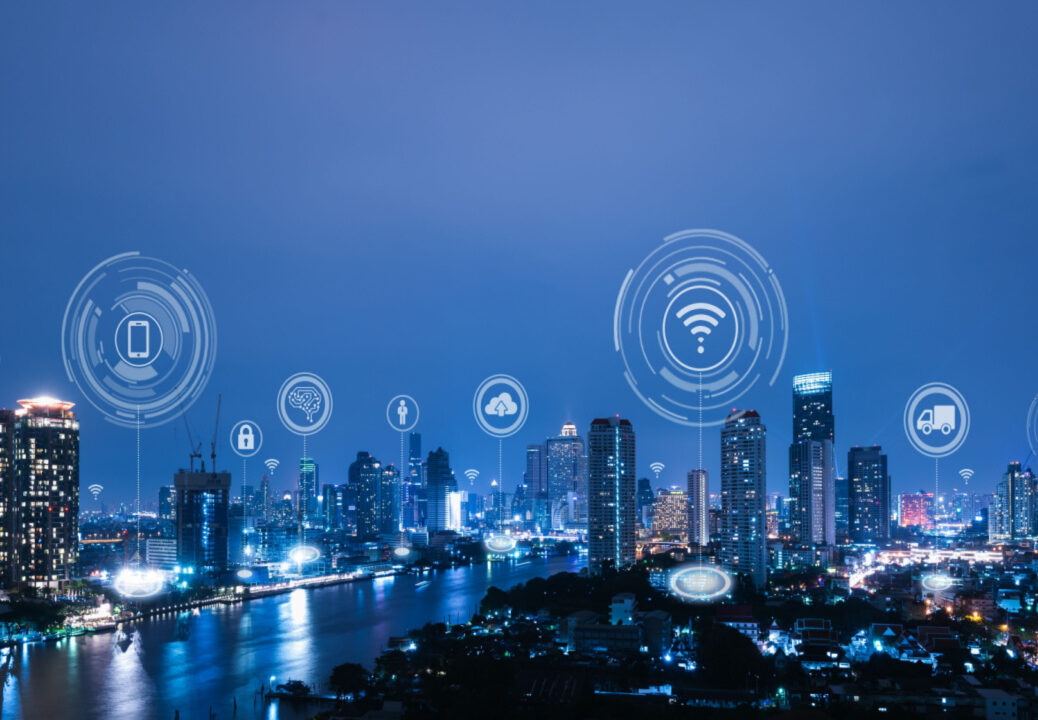Digital twins on the manufacturing menu – with help from the hyperscalers
SOURCE: HTTPS://WWW.IOTTECHNEWS.COM/
NOV 16, 2023
Microsoft Digital Twin Integration Supports Sustainable Decisions, Net-Zero Goals
SOURCE: SDXCENTRAL.COM
JUL 15, 2022

Microsoft and Cosmo Tech are joining their digital twin platforms to provide actionable insights that help organizations reach net-zero carbon emissions.
The partnership combines Microsoft Azure Digital Twins with the simulation tech provider’s 360° Simulation Digital Twin platform. The integration allows the cloud provider’s enterprise customers to monitor emissions from their systems in “near real-time” and simulate possible long-term outcomes of different actions in the context of sustainability.
The two companies say this will increase “strategic optimizations” for enterprises’ planning, financial activities, and decision making while supporting business resilience.
“Microsoft Azure customers are looking for ways to further benefit from their investments in data, IoT, and edge AI,” Microsoft Azure IoT GM Tony Shakib said. “Our collaboration with Cosmo Tech and their 360° Simulation Digital Twin platform provides a mechanism for achieving sustainable outcomes through informed decision making.”
The integration fills a need for alternative options to solving complex problems that consider both carbon emissions reduction commitments, financial goals, and performance, according to the partners.
Reducing carbon emissions is a difficult task. “Market disruptions demand more robustness and agility,” Cosmo Tech CEO Hugues de Bantel said. He touts partnership as helping decision makers understand the impacts of their choices, test strategies before implementation to ensure greater chances of success, and stay resilient in the face of climate change and “an uncertain future.”
Azure Digital Twins provide detailed digital models of physical environments by communicating with IoT and edge devices across an enterprise’s entire ecosystem. This breaks down data silos by connecting data from devices and business systems that used to be separate.
Cosmo’s digital twin technology then provides a holistic simulation layer to render the collected data meaningful and actionable. It models an uncapped number of complex change scenarios based on current data to accurately predict the chain of consequences from certain actions.
This allows organizations to evaluate alternate outcomes and downstream effects in a completely hypothetical way. This means operations and systems don’t have to be impacted until the best possible scenario is decided upon.
Global electrification provider Nexans has used the integrated tech in its efforts to reach carbon neutrality by 2030. “As Nexans is a key player in electrification and energy transition, combining financial profitability and carbon emission is critical to achieve both financial and environmental targets,” Nexans Group VP of Sustainability Olivier Chevreau said in a statement.
Nexans’ use of the platform boasts 60,000 characteristics and simulates, including 120,000 alternate supply and delivery routes. Nexans says the digital twin platform helped build a plan that should lower its carbon emissions by 50,000 metric tons each year.
LATEST NEWS
WHAT'S TRENDING


Data Science
5 Imaginative Data Science Projects That Can Make Your Portfolio Stand Out
OCT 05, 2022

SOURCE: HTTPS://WWW.IOTTECHNEWS.COM/
NOV 16, 2023
SOURCE: HTTPS://AITHORITY.COM/
OCT 03, 2023
SOURCE: HTTPS://WWW.SCIENCEDAILY.COM/
AUG 08, 2023
SOURCE: HTTPS://WWW.GLOBALLOGIC.COM
JUL 06, 2023
SOURCE: HTTPS://INDIAAI.GOV.IN/ARTICLE/HOW-DIGITAL-TWIN-TECHNOLOGY-WILL-EVOLVE-IN-2023
JUL 04, 2023
SOURCE: HTTPS://WWW.CNBC.COM/2023/01/21/DIGITAL-TWINS-ARE-SET-FOR-RAPID-ADOPTION-IN-2023.HTML
JUN 30, 2023